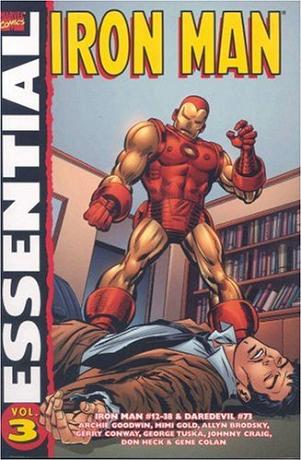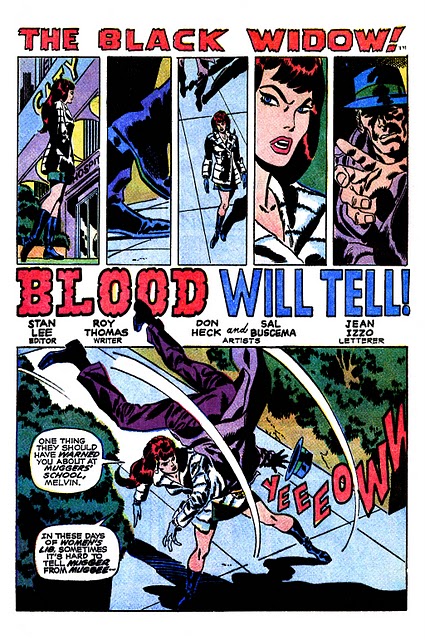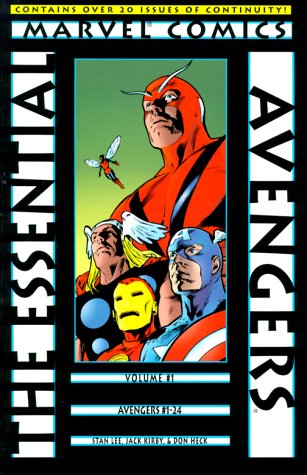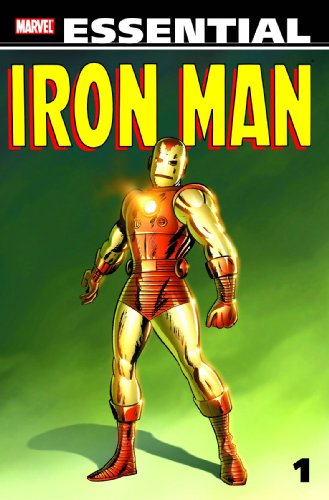
Essential Iron Man Vol. 3
Archie Goodwin, George Tuska, Don Heck and friends
Reprints: Iron Man #12-38 and Daredevil #73 (April 1969 – June 1971)
Get this for: solid but not outstanding superheroics — Three stars
The trouble with getting your Essentials from a remainders shop is that sometimes you miss a volume. In this case, they had Essential Iron Man Vol. 1 and 3, but not 2. Which means that I got to read the first half of Iron Man’s stint in Tales of Suspense, but missed the second half or the first eleven issues of his solo title. Oh well.
Essential Iron Man Vol. 3 opens with Iron Man #12 and the aftermath of a conflict I never got to see. While Iron Man/Tony Stark is trying to clear up the wreckage of that fight, we are introduced to a new villain: the Controller. This is one of the classic Iron Man villains, somebody I’ve always liked, especially the design of him. For some reason I thought he was a Jim Starlin creation, but instead it turns out Archie Goodwin and George Tuska were responsible for him. Here Basil Sandhurst is an archetypal mad scientist made an invalid by a lab accident and using his research into mental powers to enslave people and used their strength. Old shellhead is at a bit of a disadvantage with him, not as strong and having to hold back for fear of hurting the controller’s victims as well. It all seems hopeless for Iron Man, but he manages to defeat the Controller in the nick of time, just as the issue ends, in what seems to become a pattern over the volume. Villain is introduced, fights shellhead, stalemates or even defeats him, Iron Man returns to fight again, has some trouble still and then overtly quick resolution.
It’s typical for the stories in this volume, these rushed endings. The writing is a bit sloppy, whether it’s Archie Goodwin, Allyn Brodsky or Gerry Conway at the helm, none of the stories really stand out, not even the ones introducing villains like Midas or Spymaster and there’s no way of escaping the fact that this is a rather mediocre run of issues in general. All titles have periods like that, when even good writers like Goodwin can’t make them come alive. The central irony of the series is that Tony Stark’s weak heart means he has to be Iron Man; because he has to wear a heart regulating iron chest plate all the time he’s just as safe in his armour, maybe even safer, as he is behind his desk. It’s a good concept, but it’s played out by now and the drama it causes feels tired.
You also get the feeling that neither Goodwin, nor Brodsky or Conway quite knows what to do with Iron Man. So you get offbeat stories as in #26, in which the Collector forces Iron Man to travel to another dimension to steal a Solar Sword, or #32 in which black skinned emissarry from the starts crossed paths with shellhead or even the second part of the Spymaster saga, in which old Avengers villains the Zodiac turns up and the climax sees them, Iron Man and his allies Daredevil and SHIELD agents Nick Fury and Jasper Sitwell transported to another world to fight their duel there. There is also a lot of late sixties/early seventies ecological concern creeping into the series, several stories dealing with pollution and the like and the suspicion a big conglomerate like Stark Enterprise is held in, though Tony Stark is of course on the side of the righteous.
There’s no great political sophistication in these stories. Eco protestors are shown as basically good people, if sometimes naive or misguided, when pollution occurs at a Stark plant it’s caused by criminal underlings, not deliberate policy and while the protesters make good points, they should give the system (and Tony Stark) a chance to set things right. The usual vague liberal stew in other words, where problems are always caused by bad people rather than have more systemic causes.
The artwork in this volume is mostly by George Tuska, with fillins by Johnny Craig and Don Heck. To be honest, it’s difficult to know who draws which issue were it not for the credits; their style is very similar. It’s decent, not very exciting, somewhat bland but does what it has to do.
So yeah, not quite an essential volume of Iron Man.




